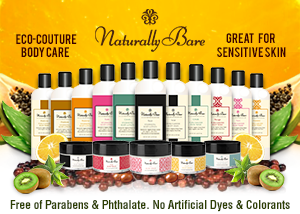Secret Scents: Is Fragrance Dangerous?

Fragrance is all around us. Especially in our own personal care product stashes, where 96 percent of shampoos, 91 percent of antiperspirants, 83 percent of moisturizers, and 71 percent of lipsticks contain some type of “fragrance,” a dubious moniker on product labels that can contain a host of concerning chemicals.
Over 230 chemicals are approved for use in today’s fragrances, including notable toxic compounds such as phthalates, carcinogens, synthetic musks, disinfectants like triclosan and quats, and volatile organic compounds (VOCs). Fragrance exposure can have an impressive lineup of effects—from immediate symptoms like sneezing, itching, and headaches to long-term effects such as asthma plus immune system and neurological impacts.
How can you know what’s lurking in your shampoo? It’s not easy, as manufacturers are currently not required to reveal the specific ingredients of the fragrances used in their products in the U.S. So, their products typically just list “fragrance,” “perfume,” or “scent” on ingredient labels. Interestingly, companies such as Procter & Gamble (Pantene, Tide, Febreze), SC Johnson (Windex, Glade), and Clorox do not disclose allergens on their U.S. products’ ingredient labels, while each of these companies discloses allergens on ingredient labels for products sold in the E.U.
“Fragrance ingredients are currently kept secret,” says Alexandra Scranton, Director of Science and Research at Women’s Voices for the Earth. “This is a big problem because women’s health is more commonly affected by exposure to fragrance, partly because they simply use more scented products.” In fact, women are 2-3 times more likely to suffer from fragrance allergy than men, partly because we use more perfumed personal care and cleaning products.
Which is exactly why Women’s Voices for the Earth (WVE), the advocacy group that works to eliminate toxic chemicals that harm women’s health, recently released its Secret Scents Report, which exposes the problem with synthetic, chemical fragrances infused into products today. WVE also lobbies to inspire companies to disclose fragrance ingredients in their products so that people can have the choice to avoid harmful chemicals.
Think you can avoid the fragrance conundrum by opting for unscented products? Think again.
“Unscented does not necessarily mean fragrance free,” says Scranton. “Always check a product’s ingredients to see if the catchall ‘fragrance’ is included on the list.”
Keen to learn more? We thought so. Check out WVE’s Secret Scents Report for more information on how to avoid unsavory chemicals in the products you buy—and for links to take action and tell companies to stop keeping secrets.
“Fragrance doesn’t need to be hazardous or toxic,” says Scranton. “The hazards are hidden behind trade secrets, but the solution begins with disclosure.”



CONNECT WITH US